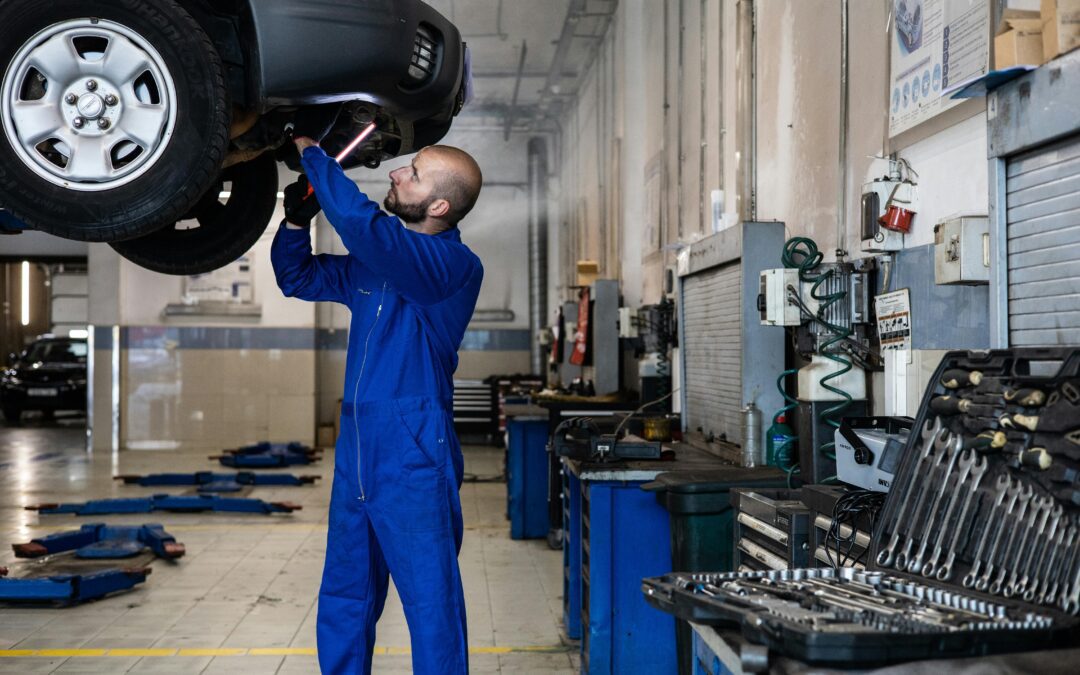According to the California Air Resources Board, 90% of Californians breathe unhealthy levels of one or more air pollutants on an annual basis. That’s why the Smog Check Program is an essential part of owning a vehicle.
Read on to learn more about what smog checks are, why they’re important, and how they contribute to environmental protection.
What Is a Smog Check?
During a smog check, your vehicle’s emissions are tested to ensure compliance with California’s regulations. The process begins with connecting your vehicle to specialized emissions testing equipment.
Your vehicle then undergoes various tests, including tailpipe emissions, visual inspection of emission control components, and an onboard diagnostics check for newer vehicles.
The technician will analyze the results and provide you with a report detailing your vehicle’s emissions levels.
If your vehicle passes the smog check, you will receive a certification, which you can use for vehicle registration. In case your vehicle fails the smog check, you may need to invest in necessary repairs to bring your vehicle into compliance.
Alternatively, in the event that your vehicle is found ineligible for DMV registration renewal, you could visit a Smog Check Referee to get a second opinion on your Smog Check results.
Retirement is another option available for vehicles that do not pass a smog check. If you’re eligible, you could receive a financial incentive to retire your car from operation at a state-approved dismantler.
History of Smog Checks in California
The Smog Check Program was implemented in 1984 to reduce air pollution by repairing or retiring vehicles that have excessive emissions. The program is administered by the Bureau of Automotive Repair (BAR).
According to the program’s guidelines, the following types of vehicles that are model-year 1976 and newer need to undergo smog checks:
- Gasoline-powered Vehicles
- Hybrid Vehicles
- Alternative-fuel Vehicles
As exceptions to the list above, some vehicles do not require a biennial smog check. These types of vehicles range from vehicles that are eight model years old and newer to electric-powered vehicles and motorcycles.
If you have an older vehicle and are worried that it might not pass a smog check, rest assured that smog check emissions standards account for the vehicle type and model year. You don’t risk failing the test just because your vehicle has higher emissions because it’s an older model.
Keep in mind that smog checks are required biennially as part of the vehicle registration process. Check your Department of Motor Vehicles (DMV) registration renewal notice to see if you need to take your vehicle to a smog check at a STAR station.
STAR stations, such as E-Z Smog, are stations that meet performance standards established by the Bureau of Automotive Repair.
Why Smog Checks Are Important
Pollutants from vehicles, such as nitrogen oxides and volatile organic compounds, react with sunlight to form smog, which has negative effects on human health and the environment. Prolonged exposure to high levels of smog increases the risk of heart attacks and strokes and is associated with an increased risk of lung cancer, as well as other respiratory diseases such as chronic bronchitis.
By taking action to reduce air pollution, we can help ensure a healthier future for ourselves and our planet.

Key Components of Smog Checks
The first component of a smog check is the emissions inspection. During this part of the test, a technician uses an exhaust gas analyzer to check for hydrocarbons, carbon monoxide, and nitrogen oxides in your car’s exhaust.
A visual inspection is another important component of the smog check. During this part of the inspection, a technician will check your vehicle to ensure that it has all the proper components and that they are set up correctly. This includes checking the air filter and housing, the air injection system, the catalytic converter, the oxygen sensor, and more. A technician will also look for any excess smoke coming from the engine, including both black and white smoke.
Black smoke is a sign that the fuel/air mixture might be off-balance in your vehicle. White smoke is a sign of trouble, as it could indicate a problem with the head gasket. If a head gasket is blown and the coolant flows into your engine, this could lead to the engine overheating, which is dangerous and needs to be fixed immediately.
Finally, there’s the functional inspection. During a functional inspection, a technician conducts five main checks to make sure that your vehicle is running properly and not emitting excessive pollutants. This includes checking the engine ignition timing, the check engine light, the gas cap and filler neck, the exhaust gas recirculation valve, and performing the low-pressure fuel evaporative test.
Common Issues During Smog Checks
Among the reasons why vehicles fail smog checks are faulty oxygen sensors, a malfunctioning catalytic converter, a dirty air filter, or a malfunctioning EGR valve.
Additionally, issues with the ignition system, such as worn spark plugs or a faulty ignition coil, can also lead to a failed smog check.
Note that from July 19, 2021, your vehicle will fail smog checks if the software was not provided by the original equipment manufacturer (OEM) or approved through a California Air Resources Board (CARB) Executive Order (EO).
Therefore, we highly recommend that you restore your vehicle’s software to the OEM or EO-approved software version before taking it for a smog check.
How to Prepare for a Smog Check
To increase your chances of passing a smog check successfully, it’s crucial to ensure your vehicle is in top condition before the test. Here are some tips to help you prepare:
- Regular Maintenance: Stay up to date with routine maintenance, including changing the oil, replacing filters, and checking spark plugs.
- Check Engine Light: If your check engine light is on, get it diagnosed and repaired before the smog check.
At E-Z Smog, we will help you make sure that your vehicle complies with California’s environmental regulations. If you live in Sacramento, contact us to schedule your visit.


